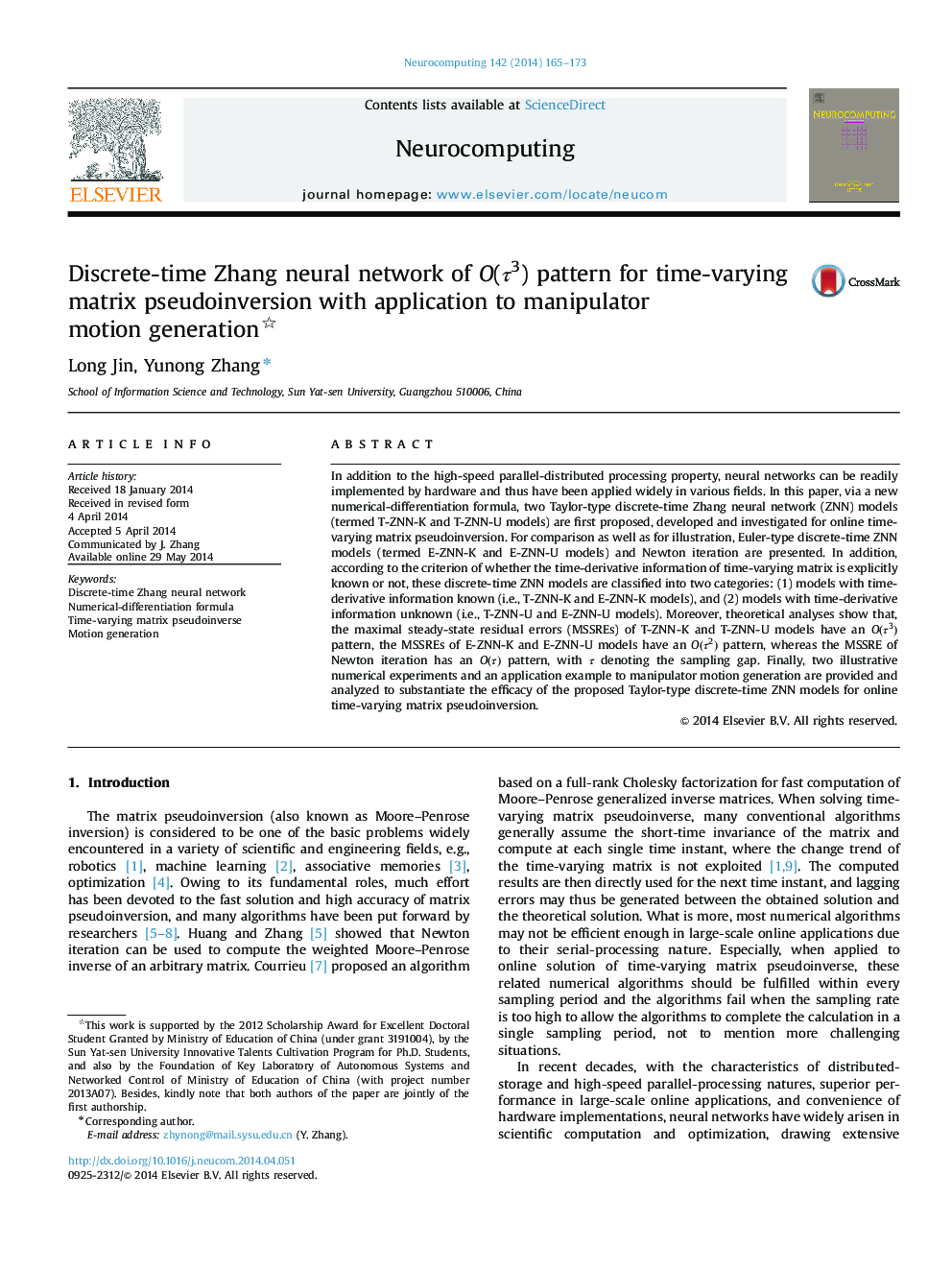| کد مقاله | کد نشریه | سال انتشار | مقاله انگلیسی | نسخه تمام متن |
|---|---|---|---|---|
| 412270 | 679623 | 2014 | 9 صفحه PDF | دانلود رایگان |

• This paper focuses on solving discrete-time varying matrix pseudoinverse.
• A numerical differentiation formula is presented to approximate the first-order derivative.
• Two Taylor-type DTZNN models are derived for time-varying matrix pseudoinversion.
• Numerical experiment results are illustrated to substantiate the efficacy of the proposed models.
In addition to the high-speed parallel-distributed processing property, neural networks can be readily implemented by hardware and thus have been applied widely in various fields. In this paper, via a new numerical-differentiation formula, two Taylor-type discrete-time Zhang neural network (ZNN) models (termed T-ZNN-K and T-ZNN-U models) are first proposed, developed and investigated for online time-varying matrix pseudoinversion. For comparison as well as for illustration, Euler-type discrete-time ZNN models (termed E-ZNN-K and E-ZNN-U models) and Newton iteration are presented. In addition, according to the criterion of whether the time-derivative information of time-varying matrix is explicitly known or not, these discrete-time ZNN models are classified into two categories: (1) models with time-derivative information known (i.e., T-ZNN-K and E-ZNN-K models), and (2) models with time-derivative information unknown (i.e., T-ZNN-U and E-ZNN-U models). Moreover, theoretical analyses show that, the maximal steady-state residual errors (MSSREs) of T-ZNN-K and T-ZNN-U models have an O(τ3)O(τ3) pattern, the MSSREs of E-ZNN-K and E-ZNN-U models have an O(τ2)O(τ2) pattern, whereas the MSSRE of Newton iteration has an O(τ)O(τ) pattern, with τ denoting the sampling gap. Finally, two illustrative numerical experiments and an application example to manipulator motion generation are provided and analyzed to substantiate the efficacy of the proposed Taylor-type discrete-time ZNN models for online time-varying matrix pseudoinversion.
Journal: Neurocomputing - Volume 142, 22 October 2014, Pages 165–173